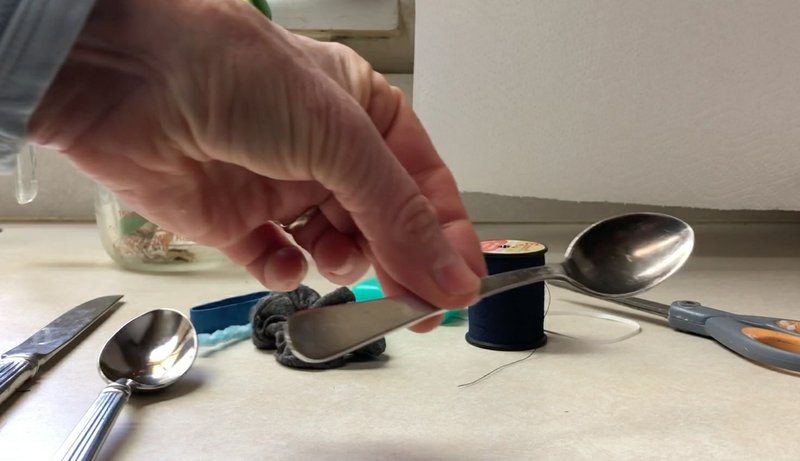Here's a series of simple and simply surprising activities that can start young scientists thinking about how sound travels to the ear.
Try each of these experiments using metal forks or spoons of different sizes. Then try the same steps using plastic forks and spoons.
Describe the sounds you hear. Try to explain what you observed, and write out your explanations.
ONE
Hold a fork loosely in one hand and rap it against a solid surface, like a countertop. Notice what you hear. Was it a tap, a clunk, a clank, a tink?
TWO
Hold a fork loosely in one hand, rap it against a solid surface and quickly lift the fork close to your ear. Notice what you hear. Was it a clunk or tink or something more like a buzz, a ting, a chime or a hum?
THREE
Hold a fork loosely in one hand, rap it against a solid surface, quickly place the handle end of the fork between your teeth and bite down. Notice what, if anything, you hear or feel.
Repeat this several times to see if changing how tightly you grip the fork makes a difference. Some fork handles can convey buzzing vibrations, others won't. Try out different types of fork.
Now do this again but bite down on the tines instead of the handle.
FOUR
Hold a fork loosely in one hand, rap it against a solid surface and quickly bring the tines close to your ear. Is the sound louder?
What happens when the tines touch your face?
What happens when you bring the handle end close to your ear?
FIVE
Hold a fork loosely in one hand, rap it against a solid surface, quickly touch the handle end to the bone behind your ear. Is the sound louder?
What happens if you touch the fork tines to that bone?
SIX
Repeat steps one, two and three using spoons rather than forks.
MAKE A SPOON CHIME
For this experiment, you will need:
◼️ a metal fork
◼️ a piece of thread about a foot long
◼️ a metal spoon.
Tie the string to the middle of the spoon handle so you can lift the spoon using the string without the spoon sliding down to touch the table.
Wrap the loose end of thread tightly around your index finger with the spoon dangling from the other end.
Hold the end of the string to the center of your ear, and let the spoon hang in the air.
Pick up the fork with your free hand and tap the spoon with the fork's handle.

You should hear a sound very different from the sound a spoon makes when you tap it against a table. You might hear a chime or a gong. Notice how long that sound continues.
Repeat this experiment using different sizes and types of spoons and using different ties: Does using a shoelace instead of thread change the outcome? What about a pipe cleaner or a twist tie?
This experiment was adapted from Mr. Wizard's Supermarket Science by Don Herbert (Random House, 1980).
Online 04/25/2020
